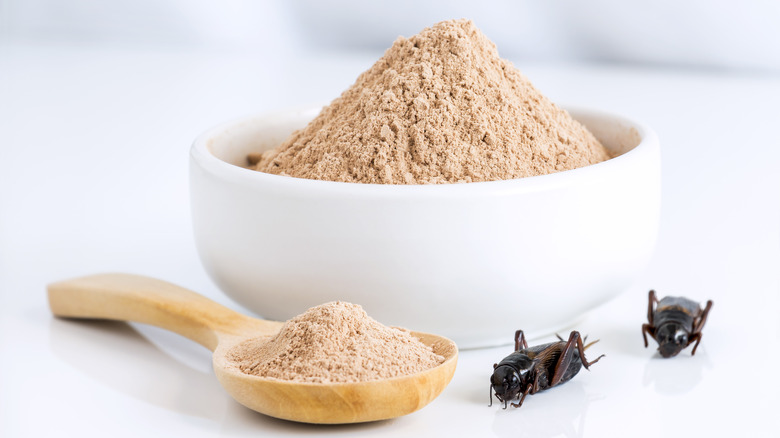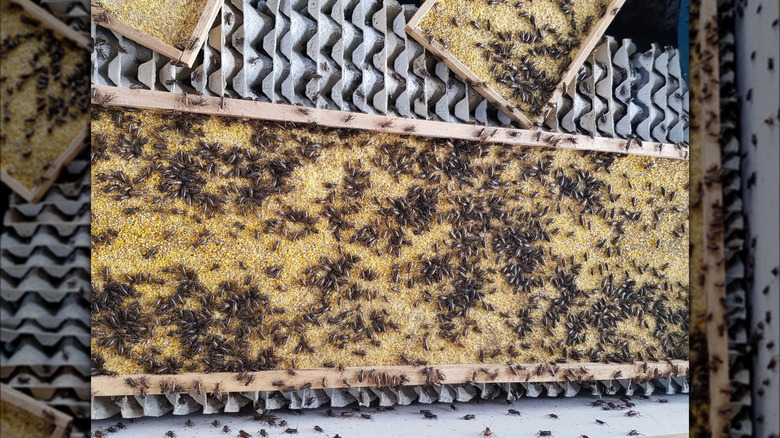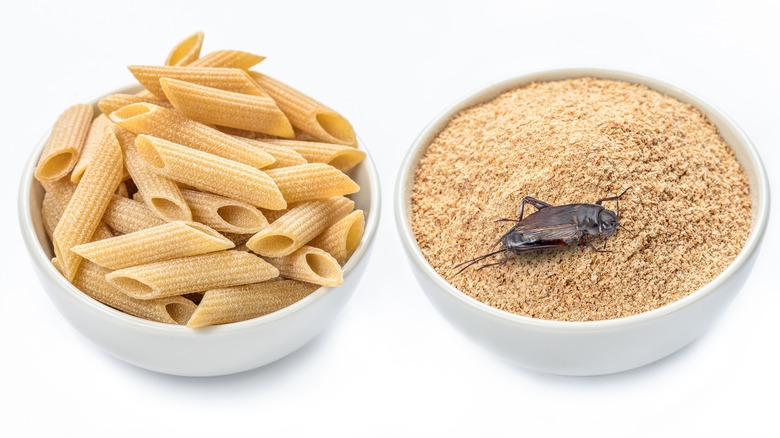Wait, Acheta Powder Is Made Out Of What?
The ingredients in the protein powders lining a grocery store shelf are pretty straightforward. You have popular varieties like whey protein, pea protein, and soy protein, as well as some more niche varieties like pumpkin protein and marine collagen. No matter your preference, you will likely know from the name what key ingredient comprises your protein powder. What if you saw acheta powder on the shelf, though? Where would that name take your mind? You probably would not guess at first glance, but this novelty product is cricket powder.
Yes, acheta is a fancy word for cricket. Specifically, it is the name of the genus that house crickets belong to — their scientific name is Acheta domesticus. A growing number of food product companies have found that freeze-drying crickets and grinding them into a fine powder creates a product as nutritious as it is tasty. Ground cricket is probably not a type of flour many people are familiar with, but market researchers predict the cricket protein powder market will grow to over $100 million by 2030. Its consumption will grow, that is, once more consumers get on board trying it.
So, why crickets?
It's fair for consumers to wonder why companies would choose crickets as their main ingredient, but it's hardly a new idea and certainly not a fad, as they have long been consumed in many parts of the world, including Africa, Asia, and Latin America. For those who do not come from communities where insects are part of the cuisine, instead of asking "Why crickets," once you understand the nutritional benefits, you might be better off asking, "Why not."
As it turns out, crickets are one of the most nutritious and sustainable ingredients around. These awkward silence-filling insects are loaded with protein — about 65% to 77% — and offer all nine essential amino acids. They also pack many beneficial nutrients, including fiber, B vitamins, calcium, iron, potassium, heart-healthy polyunsaturated fats, and are gut-healthy. Compared with other livestock (specifically the cows that produce whey protein), they are easy to farm and leave a smaller carbon and land-use footprint. According to Earth.Org, "A farm of 700 crickets can live in a 70-litre container compared to one cow that needs approximately one acre (0.4 hectares) to graze." Furthermore, they reproduce quickly and die quickly, meaning they can replenish themselves easily without consuming many resources.
What to keep in mind when consuming crickets
If you're sold on adding acheta powder to your diet, you may wonder how to go about eating it. As far as taste goes, cricket consumers describe it as neutral with nutty and malty notes. Some suggest mixing the powder into a smoothie, oatmeal bowl, or sauce.
One concern the cricket-curious should keep in mind is potential allergies. Research has shown that people with shellfish allergies are highly likely to react to crickets and other bugs the same way. Pediatric allergist Dr. Zachary Rubin of McGill University explained, "The majority of people allergic to shellfish are allergic to a protein called tropomyosin, which is also found in many insects, so it's not usually a good idea to consume insect-containing foods if you have a shellfish allergy." Aside from those with crustacean allergies, cricket protein is worth braving. Consider getting on board with the potential protein source of the future.


